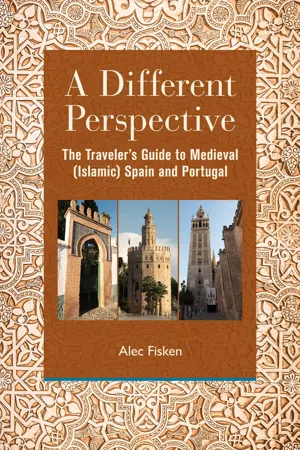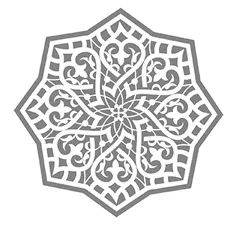![]()
Six Cities
Cordoba
Toledo
Seville
Lisbon
Granada
Ceuta
![]()
Chapter 5
Cordoba
| | Beginning (approx. year) |
| Damascus (Syria) Umayyad | 716 |
| Independent emirate/caliphate | 756 |
| Independent taifa | 1031 |
| Marrakesh (Almoravid) | 1091 |
| Marrakesh (Almohad) | 1150 |
| Conquered by Ferdinand III (Catholic Castile) | 1236 |
Any attempt to describe the Islamic centuries on the Iberian Peninsula (711 to 1492) has to start with Cordoba. Evidence of the caliphate is all over Spain and Portugal, and extends across the Strait of Gibraltar to the defensive structures in Ceuta. But the capital was Cordoba. Rich, sophisticated, and multicultural, the capital of the caliphate was home to scholars, poets, and scientists from all over the known world.
A view of the mihrab in the Great Mosque of Cordoba. The mosque is one of the few monuments of the Islamic era that every guidebook describes in some detail. We won’t duplicate their descriptions here. It is the only great mosque left standing on the Iberian Peninsula. Maybe it survived because it has a cathedral stuck in the middle of it. Emperor Charles V is said to have remarked on what an architectural blunder that was, and subsequent critics have agreed. But the jarring difference in styles is interesting in its own right, and the remarkable design elements of the mosque hint at the glory of the caliphate in its heyday.
Some of the traditions established in Cordoba survived war, revolution, and rule from more puritanical regimes in Marrakesh. The veneration of books and learning survived right through to the last days of the Emirate of Granada. The “old families” in Cordoba apparently retained their prestige and importance under different rulers. Averroes, for example, was descended from one of those old Arab families, and his grandfather served as qadi (a powerful judicial position) under Almoravid rule in Cordoba. Averroes himself served in the same role under the Almohads in both Cordoba and Seville and retired to Marrakesh, where he lived out his days with the support of the Almohad caliph.
The Almoravids and the Almohads, ruling from Marrakesh but with Cordoba as their regional capital, still acknowledged the glory of the defunct caliphate that had been based there. Pieces from the destroyed palace at Madinat al Zahara were hauled south for the prestige they could add to new construction in Marrakesh. When the Almoravids wanted the most elegant minbar (pulpit) possible for their new mosque in Marrakesh, they commissioned it from craftsmen in Cordoba. (That minbar, displayed in a small museum in Marrakesh today, is well worth a visit.)
The grandeur of Cordoba was short-lived. A few decades after 1000 it was the victim of internal dissent and rebellion, and the grand palaces, libraries, and government buildings outside of town were reduced to rubble.
By 1100 the Almoravids had reestablished Cordoba as a center of government in the Peninsula, and it continued in that role for a while under the Almohads. But under the rule of those empires the real capital was in Marrakesh, and Cordoba was reduced to being the seat of provincial government.
The visible history is unavoidable in Cordoba, and no city better exemplifies the richness and diversity of that history. There is no Dark Ages gap either in the written history or in the monuments left behind. In Cordoba the monuments illustrate a continuous history, from the arrival of the Romans in 152 BCE to the modern era. That history is laid out in startlingly different styles that are sometimes jumbled on top of each other.
The best spot to contemplate the whole continuum of the Roman, Visigoth, Islamic, and Christian eras is inside the mosque. Walk a few steps from the entrance at the west corner of the mosque and you come to a place where the stone floor has been replaced by plastic so that visitors can see down into the archeological excavations below. What looks like a Roman mosaic surrounded by stone walls has variously been described as a part of the Visigoth church that previously stood on the site, of some related building, or of some other unidentified Visigoth structure. We’ll go with the church explanation, but your guidebook may differ.
The Roman-style mosaic floor of a Visigoth building underneath the Cordoba Mosque. The view here is through a section of plastic inlaid in the mosque floor.
Look up through the forest of columns, some of which were reused from Roman buildings in the city at the time of construction. In one direction you can see a portion of the Christian cathedral that was built into the center of the mosque. Walk a short distance to the right of that and you’ll see the mihrab (like a Christian altar) of the original mosque. The stunning mosaic work around the mihrab was completed by craf...



